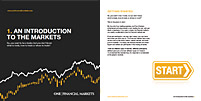

Asia FX recoups some weekly losses, dollar steady amid debt ceiling impasse
Investing.com-- Most Asian currencies rose on Friday, recovering from steep losses this week, while the dollar steadied below two-month highs as markets awaited more cues on progress towards raising the debt ceiling.
The Japanese yen rose 0.2%, but was among the worst-performing Asian currencies this week, down nearly 2% as expectations of a wider gulf in local and U.S. interest rates dented the currency. The yen was also trading just above six-month lows to the dollar.
Softer-than-expected Tokyo inflation data on Friday spurred more expectations that the Bank of Japan will hold off on tightening policy this year, although the reading was still well above the BOJ’s 2% annual target.
The Chinese yuan rose 0.3%, rebounding from a near six-month low. But the currency remained well below the key 7 level to the dollar, also receiving little support from the Peoples Bank of China’s daily midpoint fixes.
The yuan was battered by concerns over a slowing economic rebound in China, as well as deteriorating ties between Beijing and Washington following a ban on Chinese sales of U.S. chipmaker Micron Technology Inc (NASDAQ:MU).
Fears of a new COVID-19 outbreak in China also rattled sentiment, as media reports suggested that cases were once again on the rise.
Broader Asian currencies advanced on Friday, but were nursing steep losses for the week as anxiety over a potential U.S. debt default and higher-for-longer interest rates kept currency markets fixated on the dollar.
The South Korean won rose 0.5%, while the Taiwan dollar added 0.4%. The Australian dollar rose 0.1%, but was close to a seven-month low as data on Friday showed that retail spending slowed in April amid increasing pressure from high inflation and interest rates.
The U.S. dollar index and dollar index futures saw some profit-taking in Asian trade, falling about 0.2% each, but were up nearly 1% for the week. The two were also trading at their highest levels in two months.
Markets are awaiting a breakthrough in negotiations to raise the U.S. debt ceiling and avoid a government default, although lawmakers have given few signals that an agreement is imminent. But the dollar benefited from safe haven demand, as traders bet that even a default would do little to dent the greenback’s position as the global reserve currency.
Still, the prospect of a U.S. default bodes poorly for the global economy. This notion kept traders clear of risk-heavy Asian currencies.
Expectations of a hawkish Federal Reserve also kept Asian units under pressure, as traders bet that U.S. rates will stay higher for longer.
Begin trading today! Create an account by completing our form
Privacy Notice
At One Financial Markets we are committed to safeguarding your privacy.
Please see our Privacy Policy for details about what information is collected from you and why it is collected. We do not sell your information or use it other than as described in the Policy.
Please note that it is in our legitimate business interest to send you certain marketing emails from time to time. However, if you would prefer not to receive these you can opt-out by ticking the box below.
Alternatively, you can use the unsubscribe link at the bottom of the Demo account confirmation email or any subsequent emails we send.
By completing the form and downloading the platform you agree with the use of your personal information as detailed in the Policy.






